Photographer Deborah Luster’s portraits of inmates in Louisiana prisons aren’t what you might expect. The photos are neither harsh nor forbidding. They’re warm, full of pride and poignance.
And Luster’s underlying motivation for making the photos is as unexpected as they are.
Luster’s mother was killed in 1988. She said it was a murder-for-hire that took place on April Fool’s Day, and it took years to bring the perpetrator to justice.
Luster, a photographer, said she spent a long time casting around for ways to cope. Nothing seemed to work until she got an opportunity to travel to East Carroll Parish in the northeastern tip of Louisiana to take photos documenting the impoverished condition of the region.
Luster said she saw a lot of abandoned houses and a lot of prisons. “Maybe all the people are in there,” she concluded.
When she knocked on a minimum-security prison gate on a Sunday, she was astonished that the warden appeared and kindly allowed her to come inside and take portraits of the inmates, if she liked.
This was 1998, in the era of film and hand-processing. “When I saw the faces begin developing in the tray,” she said, “I cried.”
Then, and even all these years later, Luster isn’t sure what moved her about the inmate portraits. “Maybe I identified with their loss,” she said. “They’ve lost their freedom.”
Certainly her mother’s murder was part of the inspiration, but Luster’s not sure why. The whole thing is counterintuitive, she said.
For four years, she carried her camera behind the walls of Louisiana prisons, shooting inmate after inmate. Maybe 300 in all.
Luster said she doubts she would have ever gotten into the Louisiana State Penitentiary at Angola if she’d been a journalist. But because she was a secondhand victim of a violent crime, the warden greenlighted her project.
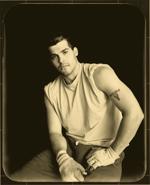
James Willis, Transylvania, Louisiana, 1999
The portraits she produced may be intimate, but the experience certainly was not.
“I had very little interaction with inmates,” she said. “It was tightly organized. They were moving them through fast. There was always a guard with me.”
She said she never knew what had landed any of her subjects in prison.
So how did she achieve the sense of familiarity you feel in so many of the portraits?
Part of the deal, Luster said, was that after they were developed and printed, she would provide copies of the photographs to her subjects.
“They knew they were getting some of these photos,” she said. “They were posing for a mother, a child, a loved one, or themselves.”
“Sometimes it was the only photo they may have had of themselves,” she said.
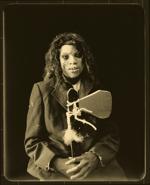
Geraldine Washington, St. Gabriel, Louisiana, 2000
The prisoners chose how to present themselves, as fearless cowboys from the prison rodeo, accomplished bodybuilders or defiant punk rockers. And sometimes they costumed for the season, as Halloween monsters, Mardi Gras revelers or the Easter bunny.
“They posed,” Luster said. “I just wanted to be invisible.”
In a way, Luster was skipping into the future, providing selfies to the prisoners long before there were selfies.
In another way, she was stepping into the past. Throughout her project, she produced the photos as hand-made tintypes, a 19th-century technology that made the pocket-sized portraits seem especially precious. It may also have implied that the prisons were regrettable relics of a long bygone era.
The laborious process of producing something like 25,000 individual prints was absorbing. For Luster, in addition to all else, the project was an emotional respite.
“I labored over it,” she said. “It was catharsis.”
Luster presented rows of her seemingly antique portraits in steel cabinets, as if they were entries in an old card catalog. One of her cabinets is now in the permanent collection of the National Portrait Gallery in Washington, D.C.
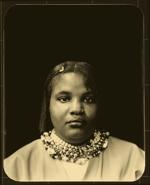
St. Gabriel, Louisiana, 2001
The photos on display in a darkened back room of Arthur Roger Gallery are not tiny tintypes but a suite of somewhat larger conventional black-and-white prints made relatively recently. In this format, the portraits may have a slightly more contemporary vibe than the earlier works, but they’ve lost none of their emotional punch.
In addition to the still photography, the exhibit titled “One Big Self” includes a haunting movie of an Angola inmate seen from the knee down, tap dancing in prison stripes.
Luster, who lived in New Orleans at the time of the project, now lives mostly in Ireland. She said she is finishing another project that is a photo history of Angola.
Luster's photos are $1,650 each. The exhibit continues through June 17, at Arthur Roger Gallery, 432 Julia St.

Installation shot of 'One Big Self,' an exhibit of photographs by Deborah Luster at Arthur Roger Gallery
"artist" - Google News
April 20, 2023 at 10:00PM
https://ift.tt/LzT0rbR
Portraits of inmates helped photographer cope with the murder of her mother - NOLA.com
"artist" - Google News
https://ift.tt/uBrZbxj
Bagikan Berita Ini
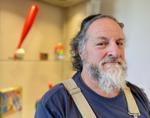

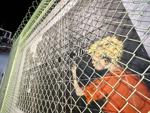














0 Response to "Portraits of inmates helped photographer cope with the murder of her mother - NOLA.com"
Post a Comment